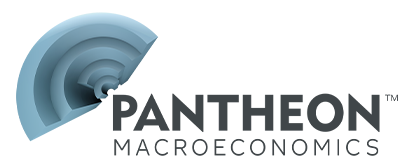Below is a list of our Emerging Asia Publications for the last 5 months. If you are looking for reports older than 5 months please email info@pantheonmacro.com, or contact your account rep
Please use the filters on the right to search for a specific date or topic.
- India’s flash PMIs only stumbled in September; no big tariff hit or boost from goods and service tax…
- …The complete numbers for Q3 point to GDP growth of 7.4%, posing upside risks to our 7.0% call.
- Malaysian inflation ticked up in August; we see increased upward risks for the rest of the year.
- In one line: Driven almost exclusively by a V-shaped bounce in coal output.
- The Philippines’ new anti-corruption drive in public projects is likely to stymie activity in the short run…
- …But needs must, as governance has been eroding, making Manila an even bigger laggard in the region.
- Malaysia's exports moderated in August, though we are still optimistic, considering the PMI data.
- Taiwan's central bank kept the discount rate at 2.000% yesterday, which was no surprise to anyone.
- Economic growth is likely to be much stronger in Q3; we have upgraded our forecast to 8.4%.
- Strong export growth is reducing the need for a rate cut, notwithstanding weak consumption.
- In one line: Third time (un)lucky.
- Bank Indonesia shocked the consensus—yet again—with a third straight 25bp BI rate cut.
- Indian export growth barely moved in August, masking a bigger nosedive in shipments to the US.
- Talks with Washington have resumed amid a drop in India’s oil imports; lower tariffs in Q4 still possible.
- In one line: Distorted by technicalities; real import demand remains healthy-ish.
- The August bounce in India's inflation should prove short-lived; high food base effects will return…
- …The upward mean-reversion in core CPI is starting to see more cracks and waning momentum.
- We have cut our full-year average forecasts for 2025 and 2026 to 2.3% and 4.2%, respectively.
- In one line: Caused mainly by more moderate primary articles deflation; still tepid, overall.
- In one line: Expect this to be a temporary headline bounce.
- Emerging Asian countries have announced national strategies to enter the semiconductor market.
- We think they will be unlikely to gain a meaningful foothold in manufacturing semiconductors.
- If they play to their strengths, however, they could attract capital to other parts of the supply chain.
A robust start to Q3 for Indonesian retail sales
- The Philippines’ unemployment rate in July jumped to its highest level in close to three years, at 5.3%…
- …Adverse weather rightly was to blame, but hiring intentions are now weakening more noticeably.
- Retail sales growth in Indonesia popped in July, but the long-term outlook remains very challenging.
A quiet start to Q3, but Philippine sales are still sliding
- Indonesia’s finance minister is out, introducing uncertainty in an area of policy that’s been sound…
- …Fortunately for Mr. Purbaya, the worst of the slump in public revenue growth should be over.
- Taiwanese exports moderate, but not as sharply as expected, as the impact of the AI boom prevails.
- Vietnam’s August export figures confirm that the front-loading to the US is well and truly over.
- Our proxy GDP gauge is holding steady from Q2 at 6.8%; ‘official’ growth rate will probably be higher.
- The household sector is still on the mend, finding greater support from the job market.
Philippine inflation has finally bottomed out
- We’ve created our own GDP deflator for India; it suggests that growth collapsed in Q2, to just 5.8%…
- …The fiscal cost of ‘GST 2.0’ is small, so expect the same for its macro impact amid fiscal consolidation.
- Taiwanese inflation ticked up to 1.6% in August , from 1.5%, as typhoon Podul drove up food prices.
- In one line: Hit by a descent into outright food deflation.
- BNM left the policy rate unchanged at 2.75%, as it remains confident despite US tariffs...
- ...The Bank has seen strong orders for electronics and expects domestic demand to stay robust.
- We’ve slashed our 2025 and 2026 CPI forecasts for Thailand to just -0.1% and 0.3%, respectively.
